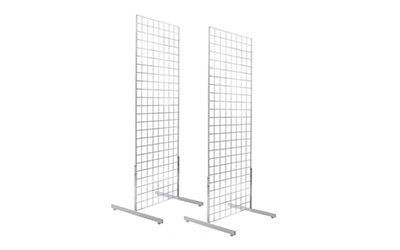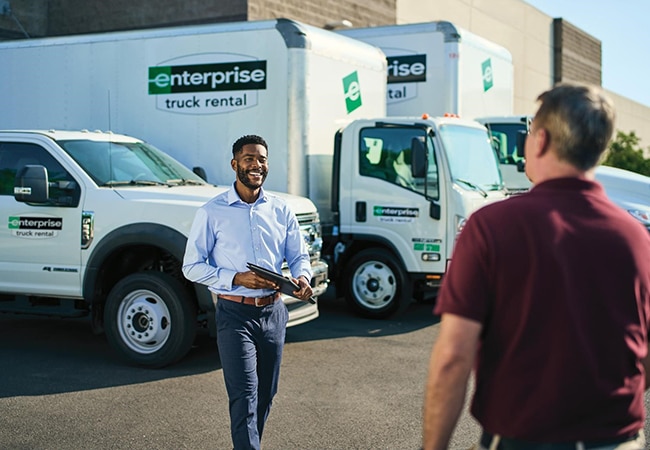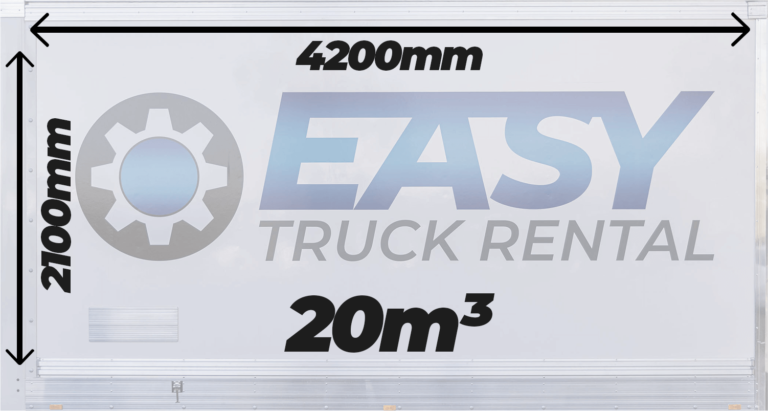Panel Truck Rental: Your Comprehensive Guide to Moving and Hauling with Confidence sale.truckstrend.com
In the dynamic world of logistics, personal moves, and business operations, the need for reliable transportation often arises. While large box trucks are perfect for multi-room moves and heavy cargo, and small sedans suffice for errands, there’s a crucial middle ground where the panel truck shines. This versatile vehicle, characterized by its enclosed, windowless cargo area and maneuverable size, offers a perfect blend of capacity, security, and ease of driving.
This comprehensive guide delves into everything you need to know about panel truck rental, from understanding its benefits and navigating the rental process to making the most of your rental experience. Whether you’re a small business owner, a DIY mover, or simply need to transport bulky items, a panel truck could be your ideal solution.
Panel Truck Rental: Your Comprehensive Guide to Moving and Hauling with Confidence
What is a Panel Truck and Why Rent One?
At its core, a panel truck is a commercial vehicle designed for cargo transport, featuring an integrated, enclosed rear compartment typically without windows. While often used interchangeably with "cargo van" by many rental companies, a panel truck generally implies a slightly more robust or purpose-built commercial chassis than a passenger van converted for cargo. Think of models like the Ford Transit, Ram ProMaster, or Mercedes-Benz Sprinter (in their cargo configurations) – these are the workhorses frequently offered as panel trucks for rent.
The appeal of renting a panel truck stems from its unique advantages:
- Optimal Size and Maneuverability: Panel trucks are significantly easier to drive and park than larger box trucks, making them ideal for navigating city streets, tight alleys, and crowded parking lots. They offer more cargo space than standard passenger vehicles but aren’t as cumbersome as a full-sized moving truck.
- Secure and Weather-Protected Cargo: The enclosed design provides superior protection for your goods against theft, vandalism, and adverse weather conditions like rain, snow, or excessive sun. This is crucial for transporting sensitive equipment, valuable merchandise, or personal belongings.
- Cost-Effectiveness for Medium Loads: For jobs that are too large for a personal vehicle but too small to justify the expense of a large box truck, a panel truck offers a cost-efficient solution. You pay for the space you need, without overpaying for unused capacity.
- Versatile Applications: Panel trucks are incredibly versatile. They are perfect for:

- Small Residential Moves: Studio apartments, dorm rooms, or supplementing a larger move.
- Business Deliveries: Transporting goods for retail, catering, floristry, or e-commerce businesses.
- Equipment Transport: Hauling tools, machinery, construction materials, or stage equipment for events.
- Appliance & Furniture Delivery: Ideal for picking up new purchases or moving single bulky items.
- Event Setup: Transporting displays, decorations, and supplies for trade shows or parties.
In essence, a panel truck fills a vital niche, offering a practical, secure, and manageable solution for a wide array of transport needs.
Key Considerations Before Renting a Panel Truck

Before you even pick up the phone or open a rental app, there are several crucial factors to consider to ensure a smooth and successful panel truck rental experience.
1. Determining the Right Size and Capacity
This is arguably the most critical step. Panel trucks come in various lengths and heights, directly impacting their cargo volume (measured in cubic feet) and payload capacity (the maximum weight they can carry).
- Assess Your Needs: Make a detailed list of all items you intend to transport. Measure large items (e.g., sofas, refrigerators) to ensure they fit through the rear door and lie flat.
- Volume vs. Weight: Don’t just consider how many items you have, but also their combined weight. Overloading a truck is dangerous and can lead to mechanical issues or fines. Rental companies provide payload specifications for each vehicle.
- Common Sizes: While exact dimensions vary by manufacturer and rental fleet, common panel truck sizes might be equivalent to 10-foot or 12-foot box trucks in terms of general capacity, but with the added maneuverability of a van chassis. Some may offer "extended length" or "high roof" options for more volume.
2. Understanding Rental Duration and Mileage
Rental companies offer flexible terms, but each has implications for your cost.
- Duration:
- Hourly: Good for very short, local trips.
- Daily: Most common for moves or business tasks.
- Weekly/Monthly: Ideal for ongoing business needs or extended projects, often offering better per-day rates.
- Mileage:
- Unlimited Mileage: Some rentals include unlimited mileage, which is great for long-distance trips.
- Per-Mile Charges: Others include a set number of free miles, then charge a per-mile fee. Carefully estimate your total distance to avoid unexpected costs. Always clarify the mileage policy upfront.
3. Insurance Coverage: Don’t Overlook This!
This is a frequently misunderstood aspect of vehicle rental. Your personal auto insurance policy may or may not cover rental trucks, especially commercial-grade vehicles.
- Check Your Personal Policy: Contact your auto insurance provider before renting to understand what coverage, if any, extends to rental trucks. Pay attention to liability, collision, and comprehensive coverage.
- Rental Company Options: Rental agencies typically offer various insurance products:
- Collision Damage Waiver (CDW): Waives your responsibility for damage to the rental vehicle.
- Supplemental Liability Insurance (SLI): Provides additional liability coverage for damages or injuries you cause to third parties.
- Personal Accident Insurance (PAI): Covers medical expenses for you and your passengers in case of an accident.
- Cargo Protection: Some companies offer specific insurance for the goods you’re transporting.
- Credit Card Benefits: Some credit cards offer secondary rental car insurance benefits. Check with your card issuer.
- Recommendation: While optional, purchasing adequate coverage is highly recommended for peace of mind and financial protection, especially if your personal policy offers limited or no coverage for rental trucks.
4. Driver Requirements and Age Restrictions
- Standard Driver’s License: For most panel trucks, a standard Class D (or equivalent) driver’s license is sufficient. You typically do not need a commercial driver’s license (CDL).
- Age Restrictions: Most rental companies require drivers to be at least 21 years old. Some may allow 18-20-year-olds but often impose a "young driver" surcharge.
The Panel Truck Rental Process: A Step-by-Step Guide
Renting a panel truck is a straightforward process, but following these steps will ensure efficiency and avoid common pitfalls.
Step 1: Research and Compare Rental Companies
Major players like U-Haul, Penske, Budget Truck Rental, and Enterprise Truck Rental are popular choices, but also consider local independent rental agencies.
- Get Multiple Quotes: Prices can vary significantly based on location, time of year, demand, and included features. Obtain quotes from at least 2-3 different providers.
- Read Reviews: Check online reviews for customer service, vehicle condition, and transparency regarding pricing.
- Availability: Confirm the availability of your desired truck size for your specific dates.
Step 2: Make Your Reservation
Once you’ve chosen a company and size:
- Book in Advance: Especially during peak seasons (e.g., weekends, holidays, end of the month, summer), panel trucks can be in high demand. Book as early as possible.
- Provide Accurate Information: Be ready with your driver’s license details, payment information, and contact details.
- Confirm Pick-up/Drop-off Locations: Double-check the exact addresses and hours of operation.
Step 3: Pick-Up Day Procedures
- Arrive on Time: Be punctual to allow ample time for paperwork and vehicle inspection.
- Driver’s License and Payment: Have your valid driver’s license and the credit card used for the reservation ready.
- Thorough Vehicle Inspection: Before driving off, meticulously inspect the truck for any existing damage (scratches, dents, cracked mirrors, tire condition). Take photos or videos of all sides, the interior, and the fuel gauge reading. Ensure any pre-existing damage is noted on your rental agreement. This step is crucial for avoiding disputes upon return.
- Familiarize Yourself with Controls: Ask the rental agent for a quick walkthrough of the vehicle’s controls: lights, wipers, mirrors, gear shifter, and any special features.
- Understand Fuel Policy: Clarify whether you need to return the truck with a full tank or at the same level as pick-up.
Step 4: Driving and Usage Tips
- Adjust Mirrors: Set side mirrors to minimize blind spots.
- Wider Turns: Remember the truck is longer and wider than your personal car. Account for a larger turning radius.
- Check Clearance: Be mindful of overhead clearances (bridges, parking garages, drive-thrus). Panel trucks are generally lower than large box trucks but still taller than cars.
- Load Properly: Distribute weight evenly over the truck’s axles. Secure items with tie-downs, blankets, or moving pads to prevent shifting and damage during transit.
- Drive Cautiously: Accelerate and brake smoothly. Leave extra following distance, especially when fully loaded.
Step 5: Return Procedures
- Refuel (if required): Fill the tank according to the rental agreement’s fuel policy. Keep the receipt.
- Clean Out the Cargo Area: Remove all your belongings and any debris.
- Final Inspection: Walk around the truck with the rental agent, pointing out the condition. Take final photos/videos of the vehicle’s exterior, interior, and fuel gauge to document its condition upon return.
- Obtain Receipt: Ensure you receive a final receipt detailing all charges. Review it carefully for accuracy.
Types of Panel Trucks and Their Applications
While the term "panel truck" broadly refers to enclosed cargo vehicles, the specific models available for rent often fall into categories based on size and design:
- Compact Panel Vans: (e.g., Ford Transit Connect, Ram ProMaster City) These are smaller, more fuel-efficient options ideal for light loads, urban deliveries, and small business needs. They drive much like a large car.
- Applications: Flower deliveries, small catering jobs, mobile pet grooming, carrying tools for handymen.
- Full-Size Panel Vans (High-Roof/Extended Length): (e.g., Ford Transit, Ram ProMaster, Mercedes-Benz Sprinter, Nissan NV) These are the most common rental panel trucks, offering significant cargo volume and payload capacity. They come in various lengths and roof heights.
- Applications: Apartment moves, furniture delivery, appliance transport, contractor supplies, event equipment, large-scale business logistics.
- Cutaway Vans (Sometimes Classified as Panel Trucks): These are vehicles where a van cab is combined with a separate, usually wider, box-like cargo body. While technically a small box truck, some rental companies might offer them in their "panel truck" category due to their maneuverability compared to larger moving trucks.
- Applications: Similar to full-size panel vans but with potentially more uniform cargo space and potentially slightly higher payload.
The key distinction for a "panel truck" as a rental choice is its focus on secure, enclosed cargo space within a highly maneuverable vehicle chassis, bridging the gap between a personal car and a full-sized moving truck.
Tips for a Smooth Panel Truck Rental Experience
Beyond the steps, here are some actionable tips to ensure your rental goes off without a hitch:
- Plan Your Route: Use GPS or mapping apps to plan your driving route, taking into account potential low bridges, narrow streets, or restricted areas for commercial vehicles.
- Load Smart:
- Place heavier items at the bottom and towards the front (cab side) of the cargo area for better weight distribution and stability.
- Use furniture dollies, hand trucks, and furniture pads to protect items and make loading easier.
- Secure everything with tie-down straps to prevent shifting during transit.
- Perform Pre-Trip Checks: Before hitting the road, quickly check tire pressure, fluid levels (if accessible), lights, and wipers. Report any issues immediately.
- Understand the Rental Agreement: Read the fine print! Pay close attention to clauses regarding mileage, fuel, late returns, cleaning fees, and damage responsibility.
- Take Photos/Videos: This cannot be stressed enough. Document the truck’s condition both at pick-up and drop-off. These timestamps can be invaluable in case of a dispute.
- Return On Time (or Early): Late returns often incur additional charges. If you anticipate being late, call the rental company as soon as possible to discuss options.
- Bring Assistance: If you’re moving heavy items, bring a friend or hire professional movers to help with loading and unloading.
Potential Challenges and Solutions
Even with careful planning, challenges can arise. Knowing how to address them can save time and stress.
- Hidden Fees:
- Challenge: Unexpected charges for mileage, fuel, cleaning, or late returns.
- Solution: Always get a detailed quote in writing. Clarify all potential fees upfront. Document fuel level and cleanliness at pick-up and drop-off.
- Damage Disputes:
- Challenge: The rental company claims new damage occurred during your rental period.
- Solution: Thoroughly inspect and photograph/video the truck at pick-up and drop-off. Ensure all pre-existing damage is noted on the agreement. Purchase adequate insurance.
- Breakdowns or Mechanical Issues:
- Challenge: The truck malfunctions during your rental.
- Solution: All reputable rental companies offer roadside assistance. Have their emergency number readily available. Report issues immediately.
- Not Enough Space/Wrong Size:
- Challenge: You underestimated the volume of your cargo, and everything doesn’t fit.
- Solution: Be meticulous in pre-planning your load. If you’re unsure, always opt for a slightly larger truck. If you realize mid-rental, contact the company to see if an upgrade is possible, though this will likely incur additional costs.
- Driving an Unfamiliar Vehicle:
- Challenge: Feeling uncomfortable or inexperienced driving a larger vehicle.
- Solution: Take a few minutes in an empty parking lot to get a feel for the truck’s size, turning radius, and braking. Drive slower than usual, especially in traffic or unfamiliar areas.
Panel Truck Rental: Estimated Pricing Guide
Please note that the prices below are estimated ranges and can vary significantly based on location (city vs. rural), rental company, time of year (peak season vs. off-peak), demand, vehicle availability, and specific promotions. Always obtain a direct quote from your chosen rental provider.
| Rental Type | Estimated Price Range (USD) | Included Mileage | Extra Mileage Cost (USD/mile) | Insurance Options (Cost Range) | Additional Fees (Common Examples) | Notes





